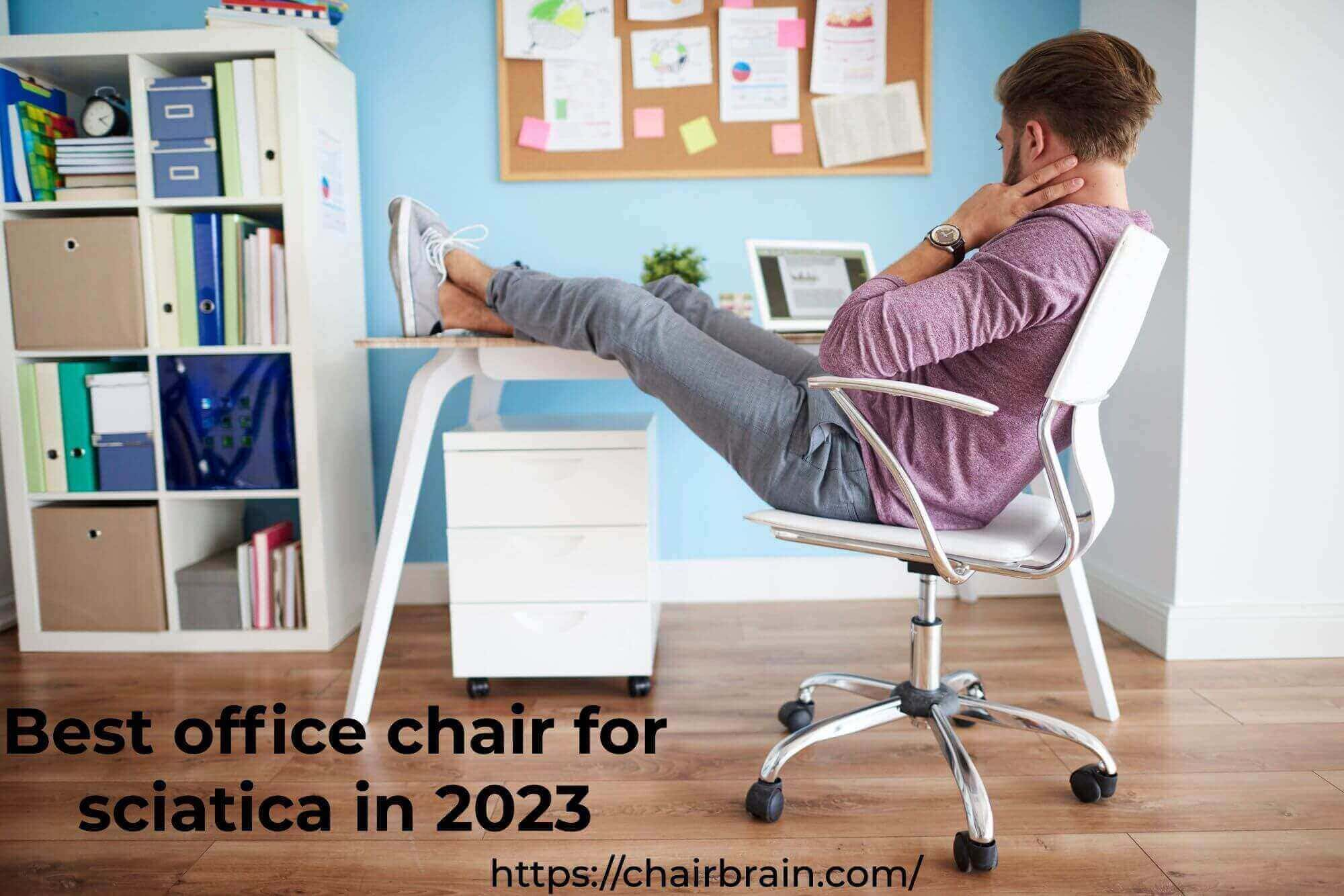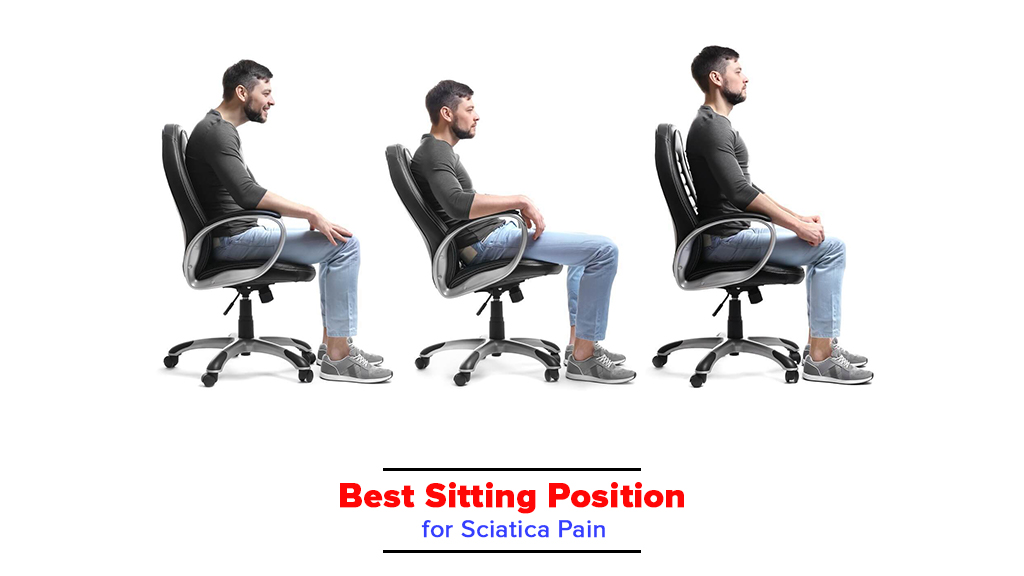Understanding Sciatica and Seating: Best Chair For Sciatica Problems

Sciatica is a common condition that affects the sciatic nerve, the largest nerve in the body. It can cause pain, numbness, tingling, and weakness in the leg, hip, and buttock. While sciatica can be caused by a variety of factors, improper seating can significantly exacerbate the pain and discomfort associated with this condition. Understanding the anatomy of the spine and how it relates to sciatica is crucial for choosing the right chair to support your health and well-being.
Anatomy of the Spine and Sciatica
The spine is a complex structure made up of 33 vertebrae, which are bones stacked on top of each other. Between each vertebra is a disc, which acts as a cushion and shock absorber. The sciatic nerve originates in the lower back, specifically in the lumbar region, and travels down the back of each leg. It is responsible for transmitting sensory information from the legs and feet to the brain and motor commands from the brain to the muscles in the legs.
When a disc in the lower back herniates, it can press on the sciatic nerve, causing pain, numbness, tingling, and weakness in the leg. Other causes of sciatica include spinal stenosis, which is a narrowing of the spinal canal, and piriformis syndrome, which occurs when the piriformis muscle, located in the buttock, compresses the sciatic nerve.
The Impact of Improper Seating on Sciatica
Sitting for extended periods can put pressure on the lower back and sciatic nerve, potentially aggravating sciatica pain. Poor posture, inadequate lumbar support, and lack of ergonomic design in chairs can further exacerbate the problem.
Here are some ways improper seating can contribute to sciatica pain:
- Increased Pressure on the Sciatic Nerve: Sitting in a chair that doesn’t provide adequate support for the lower back can put pressure on the sciatic nerve, leading to pain and discomfort. This is particularly true if the chair is too low, forcing the user to slouch and compress the nerve.
- Poor Posture: Slouching or leaning forward while sitting can strain the muscles in the lower back and put pressure on the sciatic nerve. This can worsen sciatica symptoms and lead to long-term back pain.
- Lack of Lumbar Support: The lumbar region of the spine needs proper support to maintain its natural curve. Chairs without adequate lumbar support can lead to improper posture, increased pressure on the sciatic nerve, and exacerbation of sciatica pain.
- Limited Movement: Sitting for long periods without moving can restrict blood flow to the lower back and legs, leading to muscle stiffness and increased pain. This can further aggravate sciatica symptoms.
It is important to choose a chair that provides adequate support for the lower back and promotes good posture. A chair with adjustable lumbar support, a comfortable seat height, and ergonomic design can help reduce pressure on the sciatic nerve and alleviate sciatica pain.
Key Features of Sciatica-Friendly Chairs

A sciatica-friendly chair should provide adequate support and comfort to minimize strain on your lower back and alleviate sciatica pain. It’s essential to consider various features that can contribute to a pain-free and ergonomic seating experience.
Lumbar Support
Lumbar support is crucial for maintaining proper spinal alignment and reducing pressure on the lower back. It provides a gentle curve that supports the natural curvature of the lumbar spine.
A chair with adjustable lumbar support allows you to customize the fit to your individual needs.
Chairs with lumbar support are designed to distribute weight evenly, preventing pressure points and reducing discomfort. This feature helps alleviate sciatica pain by promoting proper posture and minimizing strain on the sciatic nerve.
Seat Depth
The seat depth of a chair refers to the distance from the front edge of the seat to the backrest. An appropriate seat depth allows for proper leg circulation and prevents pressure on the back of the thighs.
The ideal seat depth should allow your thighs to be parallel to the floor with a slight gap between the edge of the seat and the back of your knees.
When choosing a chair, it’s important to ensure that the seat depth provides enough space for your legs to rest comfortably.
Armrest Positioning
Armrests should be positioned at a height that allows your elbows to rest comfortably at a 90-degree angle. Proper armrest positioning promotes good posture and reduces strain on your shoulders and neck.
Adjustable armrests allow you to customize the height and angle to suit your individual needs.
Armrests also provide additional support for your arms and can help to reduce fatigue during long periods of sitting.
Materials
The materials used in a chair can significantly impact its comfort and support. Here are some examples:
- Memory Foam: Conforms to the shape of your body, providing personalized support and pressure relief.
- Gel: Offers excellent breathability and pressure distribution, reducing discomfort and promoting airflow.
- Breathable Fabrics: Allow air to circulate, keeping you cool and comfortable during long periods of sitting.
Types of Chairs for Sciatica Relief

Choosing the right chair can significantly impact your sciatica pain and overall comfort. Understanding the different types of chairs available and their suitability for sciatica relief can help you make an informed decision. Let’s explore some popular chair types and their effectiveness in managing sciatica.
Types of Chairs for Sciatica Relief
This table provides a concise overview of different chair types and their suitability for sciatica.
| Chair Type | Sciatica Suitability | Pros | Cons |
|---|---|---|---|
| Office Chairs | Highly suitable, especially with ergonomic features. | Wide range of adjustments, customizable support, affordable options. | May require more adjustments for optimal comfort, not ideal for prolonged reclining. |
| Gaming Chairs | Moderately suitable, if they offer good lumbar support and adjustability. | Stylish, comfortable, and often include built-in lumbar support. | May lack the adjustability of ergonomic chairs, not designed for prolonged sitting. |
| Ergonomic Chairs | Highly suitable, designed to promote proper posture and reduce strain. | Excellent lumbar support, adjustable features, promote healthy sitting posture. | More expensive than other chair types, may require more space. |
| Recliners | Moderately suitable, can provide temporary relief but not ideal for long-term use. | Excellent for relaxation and temporary relief, can be adjusted to various positions. | Limited adjustability, may not offer adequate lumbar support, not suitable for prolonged work sessions. |
Comparison of Chair Types for Sciatica, Best chair for sciatica problems
This table Artikels the pros and cons of each chair type to help you understand their strengths and weaknesses.
| Chair Type | Pros | Cons | Suitable for Sciatica |
|---|---|---|---|
| Office Chairs | – Wide range of adjustments for height, tilt, and lumbar support. – Customizable features for individual needs. – Affordable options available. |
– May require more adjustments for optimal comfort. – Not ideal for prolonged reclining. |
Highly suitable, especially with ergonomic features. |
| Gaming Chairs | – Stylish and comfortable design. – Often include built-in lumbar support. – Can provide good posture support. |
– May lack the adjustability of ergonomic chairs. – Not designed for prolonged sitting. |
Moderately suitable, if they offer good lumbar support and adjustability. |
| Ergonomic Chairs | – Excellent lumbar support. – Adjustable features to promote proper posture. – Designed to reduce strain and discomfort. |
– More expensive than other chair types. – May require more space. |
Highly suitable, designed to promote proper posture and reduce strain. |
| Recliners | – Excellent for relaxation and temporary relief. – Can be adjusted to various positions. – Comfortable for short periods. |
– Limited adjustability. – May not offer adequate lumbar support. – Not suitable for prolonged work sessions. |
Moderately suitable, can provide temporary relief but not ideal for long-term use. |
Recommended Brands and Models
Here are some brands and models known for their effectiveness in managing sciatica pain.
| Brand | Model | Chair Type | Key Features |
|---|---|---|---|
| Herman Miller | Aeron Chair | Ergonomic Chair | – Adjustable lumbar support. – Breathable mesh fabric. – Posture-correcting design. |
| Steelcase | Leap Chair | Ergonomic Chair | – Adjustable backrest and seat. – Dynamic lumbar support. – Adjustable armrests. |
| Haworth | Zody Chair | Ergonomic Chair | – Adjustable seat depth and height. – Lumbar support with adjustable tension. – Breathable fabric options. |
| Serta | Perfect Sleeper Recliner | Recliner | – Multiple recline positions. – Lumbar support cushions. – Comfortable and supportive design. |
Best chair for sciatica problems – Bos, kalau lagi cari kursi buat ngilangin sakit pinggang, cari yang ergonomis, ya! Lumayan lah, biar gak ngilu terus. Kalo mau yang lebih keren, cek aja best ceo office chair buat kantor. Gak cuma nyaman, tapi juga bikin aura bos-mu makin kece! Nah, balik lagi ke kursi buat sakit pinggang, pilih yang ada lumbar support-nya biar tulang belakang tetep sehat.
Finding the best chair for sciatica can be a real pain, but once you’ve got the right one, you’ll be sitting pretty. But don’t forget to protect your floors from those chair legs! Check out this guide for some awesome tips.
You’ll be able to enjoy your comfy chair without worrying about scratches or dents, and that’s a win-win for your back and your floors.
